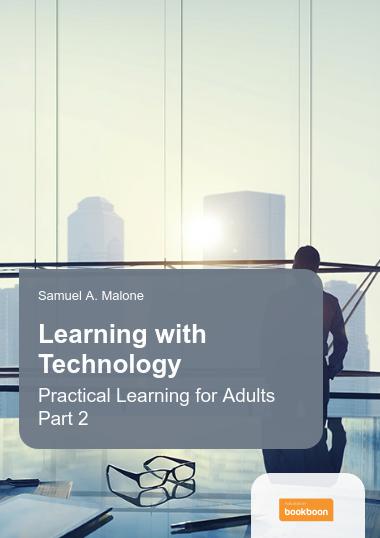How to make your learning platform feel like a consumer product

Many L&D professionals struggle to ensure that employees are engaged in their eLearning programmes. In fact, this is often the reason that so many eLearning initiatives end up failing shortly after onboarding [1]. Learners’ lack of engagement in their own training is often caused by the platform through which their organisation provides training tools.
HR and L&D managers can learn from consumer products and provide their learners with training materials with a look and feel they are familiar with, which not only engages but encourages retention and proactive learning.
The consumerisation of learning
Today’s learners are also today’s consumers and learning professionals must recognise that employees need their training like they need their entertainment: fast, user-friendly, portable and on-demand.
Modern corporate learning programmes should be learning from the on-demand consumer entertainment streaming services, which employees are using on a daily basis, such as Spotify, HBO, Disney or Netflix.
These content streaming companies have given consumers the power to program their own entertainment. And learners now want and deserve the same freedom to decide for themselves what, when, where, and how they’re going to learn [2].
Huge entertainment streaming services and corporate eLearning platforms may appear to be strange comparisons to make but L&D professionals can learn a lot about implementing a successful eLearning programme by looking at these platforms and the qualities that have made them so successful.
Here are 7 ways to make your learning programme feel like a consumer product:
Make sure it’s quality content
In the same way that consumers are uninterested in low-quality entertainment content, employees will stop engaging with your learning programme if they do not perceive it to be of high quality or relevant to their daily training needs. Whether it’s an eBook, video, audio, articles or courses, ensuring quality in eLearning content is crucial when it comes to employee usage and engagement and can save L&D managers both time and money [3].
Use programmes that source original content
Streaming services such as Netflix are now acquiring original content for their libraries making the companies both producer and distributor [4]. By branding it as their own content, the company has instilled a level of trust in its users. When they see the ‘Netflix Original’ branding, they expect consistent quality.
In the same way, sourcing and distributing original content, be it eBooks, courses, games or videos, exclusively on a learning platform ensures a level of quality, builds employees’ trust and peaks interest in the material. The fact learners can access original content they can only find on the learning platform their company provides creates an exclusivity surrounding the content even causing a ‘fear of missing out’ which encourages higher usage [5].
Combining the trust in the quality and the lure of exclusivity, those in charge of L&D in an organisation should look for a learning platform that provides exclusive, quality learning material to their users that they cannot find anywhere else.
Make the most of work. Check out our weekly newsletter #WorkplaceWednesday for the best work-related blogs.
Provide a variety of content
When it comes to content, entertainment streaming services like Amazon and Spotify are so successful because they provide something for everyone. A wide variety of material means these platforms are relevant for a multitude of users.
In the same way, modern learners need a platform full of fit-for-purpose, personalised learning content. Providing a variety of content gives learners the opportunity to take charge of their own learning by finding material that is relevant to their personal upskilling needs and skipping what they do not require.
Having the choice to consume a variety of relevant learning material keeps employees motivated as they work towards their personal goals within the wider context of their company’s needs [6].
Ensure the platform is easy to navigate
No matter how high-quality or how varied the content that a service provides might be; if users can’t quickly find what they are looking for, they won’t be able to consume it. With short attention spans and busy days that leave little time in workers’ schedules for learning, people won’t search for more than a few moments to find the material they are looking for.
While critically acclaimed book titles, artists or television shows have been crucial in boosting the popularity of the entertainment streaming service, it is their user-friendly platforms that have cemented their success [7].
Quality content and a variety of relevant topics entice learners to start with but an easy-to-navigate, engaging platform is what will keep them coming back. If the material is hard to find, and the interface is archaic and unappealing, learners will lose interest and engagement rates will decrease.
Learning professionals should provide employees with an easily searchable programme that allows learners to access the content they want quickly, begin learning it right away and apply it sooner.
Use programmes with recommended ‘Binge Learning’
Entertainment platforms gather data regarding user consumption and recommend content based on their findings. These platforms suggest relevant or similar content to users as a way to keep their interest peaked as well as learning what works and what doesn’t.
L&D managers would be wise to use training programmes that offer a similar method. When a learner searches for or finishes a piece of learning material, learning platforms with data-driven algorithms can make recommendations on what material learners might like. This encourages increased engagement in learning and takes the guesswork out of the hands of learning professionals [8].
Give users offline learning opportunities
Keeping in mind that users are more on-the-go than ever before, entertainment streaming services now offer the option to download books, videos, and music and consume them offline. The call for offline access to content has become a crucial aspect of the survival of content providers [9].
To match this, learning should be available on-the-go so that employees can access training wherever they are without requiring access to a WiFi connection. L&D managers should provide employees with downloadable, offline access to learning materials.
Promote new learning content and a learning culture
Just like any consumer service, if people don’t know about it, they can’t use it. Managers should think of learning initiatives like a product that needs marketing and promotion in order to be successful within an organisation. Without the knowledge of the learning materials available to employees, how can they be expected to take the initiative to learn?
Most learning initiatives fail because they are not promoted properly, and employees are either unaware or forget they exist altogether. L&D professionals should look to companies that assist organisations with internal marketing of learning content through providing notifications of new material, posters, and internal newsletters.
Increasing awareness of the materials available to learners is important but so is promoting a company’s learning culture. When promoting learning programmes, let employees know that management wants them to learn and that they are being encouraged to upskill and reskill when and how they would like to.
Learning and consumerism
Learning and entertainment don’t need to be separate entities, and the programmes learners consume training content from should resemble entertainment platforms for many reasons.
Those in charge of learning within an organisation should look at learners like consumers and provide them a learning programme that matches the qualities of what makes the entertainment platforms they use at home so successful. Giving learners access to user-friendly platforms with a variety of relevant, quality, original content they can download and consume at their own pace, allows them to take ownership over their own upskilling in a way they are familiar with and encourage proactive life-long ‘binge learnin
Check out our weekly newsletter #WorkplaceWednesday for the best work-related blogs.
References:
- Top 5 Reasons Why eLearning Projects Fail
- What Netflix and Employee Development Have in Common
- 2 eLearning Production Quality Standards
- The Netflix revolution – Part 1: History of Netflix
- The whirlwind success of Netflix’s ‘You’ and ‘Bird Box’ shows it’s become a well-oiled FOMO machine
- 10 Tips To Create Employee Engagement In The Workplace
- E-learning: Why employees expect a Netflix experience
- What Netflix and Employee Development Have in Common
- Offline Is The New Online: Unleash The Power Of Anytime, Anywhere Learning




